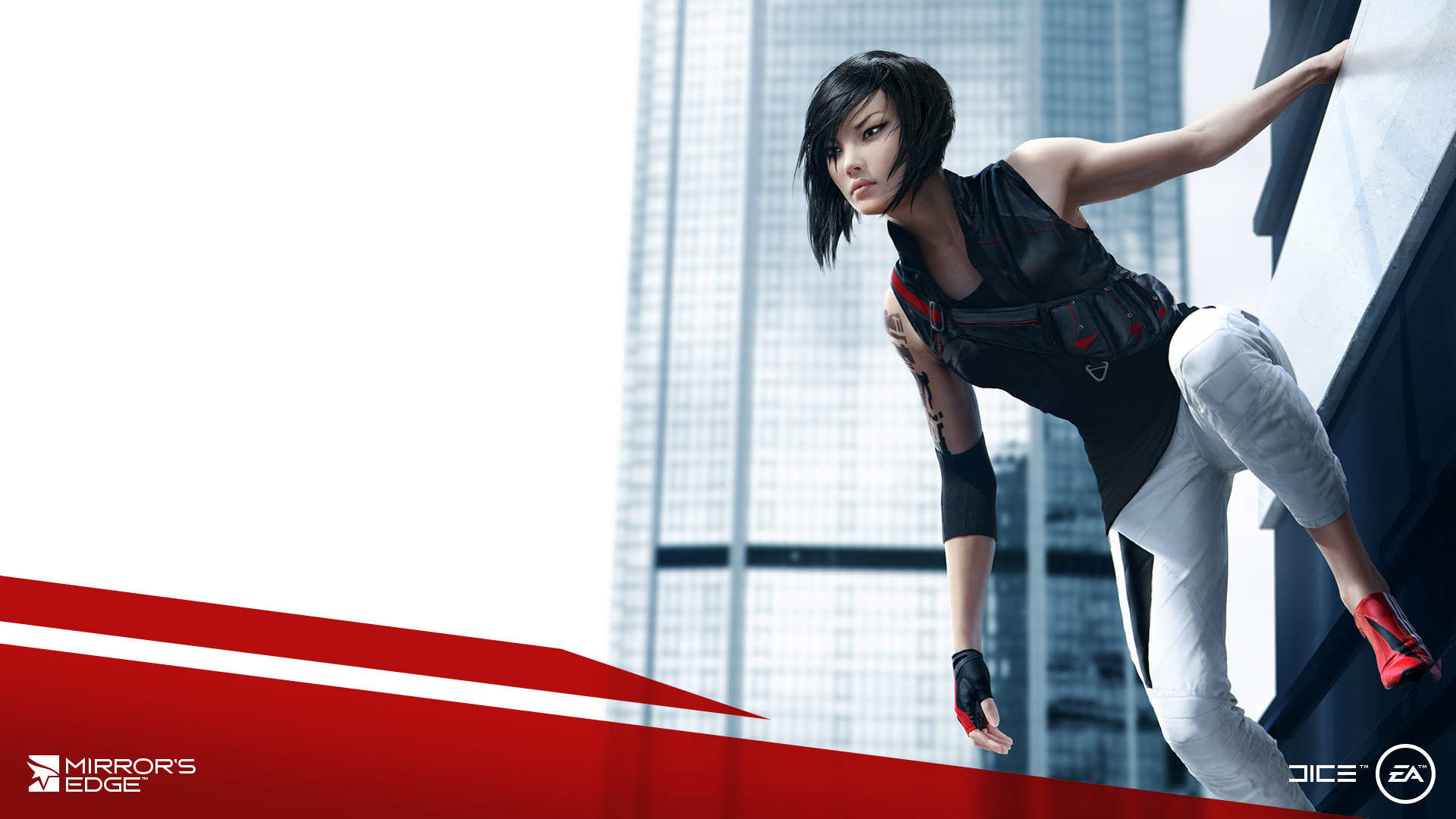Designing Faith: Creating an iconic runner
A Pixel Faith, three unbreakable guidelines, and researching hi-tech prototype sportswear. Get behind the scenes of designing Faith.

Back in June 2013, fans got their first glimpse of the new Faith through the E3 announcement teaser. Culminating in a newly tattooed Faith hanging from a skyscraper wall, the clip revealed a revamped heroine created for the next generation.
Art Director Jhony Ljungstedt and Senior Concept Artist Per Haagensen recall the reactions of the reveal:
“We had been quiet for some time. With the announcement, we wanted to show fans that the Mirror’s Edge style had evolved. And when we revealed the new design of Faith it felt like fans really appreciated the changes – but at the same time felt at home.”

The design of Faith was new, yet familiar. This was no coincidence; during development DICE had been adhering to one key design rule for the heroine of Mirror’s Edge Catalyst. Ljungstedt explains:
“We’ve called it ‘Pixel Faith’. If you break down Faith to her most basic building blocks you see how these are distributed on her design in the shape of red shoes, white trousers, black shirt, and a singular red glove. Details can be changed within those building blocks, but we won’t mess with the core components.”
An example of the approach is that literally hundreds of designs of Faith’s red shoes have been made – but they’ve all been red. And working with Pixel Faith has not only involved keeping iconic gear, but resisting temptations to add more.
“Decisions like keeping that one glove and not adding another one is very important,” Per Haagensen says. “You need to keep those characteristic designs.”
Apart from relying on a pixelated artistic vision, the concept of a Runner also needed to be defined to dictate the design of Faith. What is a Runner’s role in society? What do they stand for? Speed, swiftness, and efficiency – all Faith’s traits as a Runner had to be reflected in her outfit and body design.
Three keywords were also placed firmly into the heads of team members to help define the style of the game: elegance, attitude and believable. For the latter, Haagensen gives an example of a design decision made early in the process:
“With the new art direction we decided early on to move away from the looser fit trousers of the first game, to a sleeker look with more advanced types of multi-purpose technical fabrics.”
To create an outfit looking and feeling functional, a gargantuan amount of research was made. Searching for practical, light, and durable fabrics, the design team looked at real-life clothes such as sportswear to find the right materials.
“During research, we discovered a lot of prototype clothes that clothing manufacturers and even military are looking into. These would be too expensive for real-world mass production, but luckily we don’t have that problem as game designers.”
Thanks to this research, the team was sure they weren’t stepping into magical realms in the design process. “Believable” being the mantra, Faith’s physique was also created by avoiding exaggerations such as over dimensioned shoulders or a wasp waist. Faith was crafted to look like a real person that’s been trained a lot.
“We did research on real runners and parkour artists to find an elegant and sleek balance of muscle definition. Someone who looks quick and agile,” Haagensen says.

To sum up, there are many different aspects of the design process behind Faith (something we’ll be sure to cover in upcoming posts) - and a tiny pixel figure can be of great importance. The team is hard at work and we hope you’ll stay tuned for more behind the scenes insights. Until next time, we leave you with Jhony Ljungstedt’s words:
“It’s amazing to see that so many see Faith as an icon. We want to live up to the expectations. We want to realize a vision that will be remembered.”